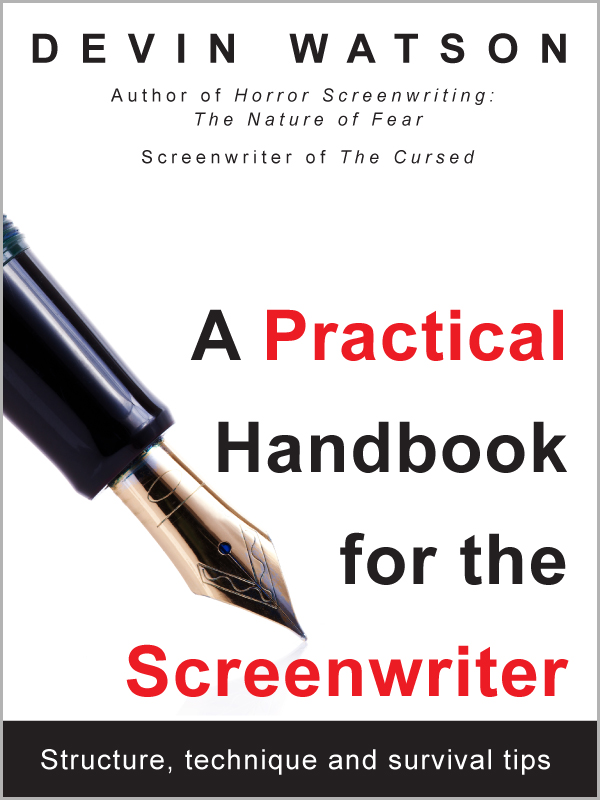Business plans may be a new thing for you. They may be old hat. But writing them and more importantly getting them written right is an art and science. They bridge the gap between investor and filmmaker and require knowledge of both subject matter areas to make them work.
This is not an end-all, be-all article on film business plans. It is a fair approximation of the kinds of information you should and will need to have in them in order to be taken seriously by investors.
Why should you write a business plan for your film? Because this is a business. Even if you are the only investor in your project or are funding through alternative means such as crowdfunding you should think like one and go into every project with a plan and realistic expectations. Knowing what you have to do and when you have to do it will help keep your project from flying off the rails.
Notice that I said it will help keep your project under control. There are many variables that go into a film, but a plan does help you identify a great number of them, along with how to deal with them.
And in case you needed one more reason, here’s a good one: no investor is going to even consider your project unless you have a complete package. Which starts with the plan.
A solid business plan for a film lays everything out in terms of what you are going to do, when to do it, and how to go about doing it. All of these questions are answered well in advance of shooting a single frame. This is your bible for the duration of that film’s lifetime.
Here is, at a minimum, what you should have in your business plan. We’ll go over each one of these in detail:
- A 1-page synopsis of the film’s story
- Comparisons between your (right now) hypothetical film and others in the same genre and general budget range
- List of principal players involved in production and their positions, along with short bios
- A complete and realistic budget
- A realistic estimate for principal photography time aka schedule of production
- Financing arrangements between filmmaker and investor
- A comprehensive marketing and distribution plan, even if you do not currently have distribution lined up (and who does these days?)
- Any and all cast members that have been signed or written a Letter of Intent, along with head shots and bios
- Projections and expectations of returns, and their return times
Looks like a lot, isn’t it? Yes, a good film package takes time to put together. This is the “business” in “show business.” Underneath it all it’s still business; the making of products that are then sold to markets around the world or in your country. Your products are films, whether in development or already produced.
Making one of these packages by yourself can seem daunting, given that list up there. It’s not all that hard if you take it piecemeal and assemble it over time.
Understanding Investors
Investors are businessmen. However, many more investors are coming from areas other than film due to the economic crunch and other factors and don’t understand some of the nuances of it. Typically, the first thing I end up doing with an investor unfamiliar with the film industry is talking about how it differs from their own area, such as real estate or stocks, in terms of turnaround time, ROI, and the length of returns for a film.
Bring your A-game to the plan. This is where you have to make your case that it makes sense to invest in your film. Above all, they will want to see numbers rooted in reality.
An investor will want to see numbers that show:
- How much is it going to cost?
This is answered by a detailed budget with a top-level sheet for the film that contains accurate information. If there’s any glaring omissions like P&A you should take notice.
- How well did other movies of the same budget level and genre do in the past year? Past 5 years?
This will require some footwork on your side. I would strongly suggest developing a catalog of budget vs. return ratios for movies of various genres that fit within some of the various budget levels. This will also let you keep track of trends so that your investors (and by extension you, whether you know it or not) don’t buy into a turkey.
Bear in mind though that any project you could conceivably start today might not see public release for 18 months. This is a conservative but realistic rule-of-thumb; in 18 months the horror movie you made now might be more profitable to release than this moment because horror isn’t as popular at this moment.
I would strongly suggest getting an IMDBPro account, which has some trending information already built in along with a few other bits of information on individuals and projects that might be germane to your research. But please remember this: even IMDB does not have every single credit for a person and not every project is quite as it seems on a page. I know this from experience.
- How long before I start seeing a return on my money?
This is one of the most common questions posed, and rightly so. Investors that are unfamiliar do not know that a film is a long-term investment. They will not see returns within the first or even second quarter of the deal closing because that time is spent on pre-production and principal photography.
Depending on where you shoot your film, there will be other means of getting back a healthy percentage of your budget.
- How much return do I get during the remuneration phase?
This is after the film is out and making money. Investors should receive their money back before anyone else on the back-end unless otherwise agreed upon. Should is the operative word in that sentence. Not every deal is structured that way, but for the more honest of us it makes sound business sense to pay back those who invested first before raiding the coffers. If you’re an investor and reading this, look over any film business plans and please make sure you understand clearly how and when the filmmaker plans to pay you back.
For many independents, an investor gets 120% of their total investment back before going into a 50-50 split of all money after in order to give them a reasonable return and incentive. Any profits thereafter are shared with producers and others that are under agreements for said profit sharing. This is an extremely fair and equitable amount. Any investor thinking that they are going to get more than 50% holdings on any film is likely to find a lot of filmmakers walking away from a deal, unless they don’t understand or are acting out of desperation.
Letters of Intent
- Is there a distributor letter of intent for this project?
This one is contentious. By virtue of being independent and most likely unknown, you may not have any LOIs from a distributor for a particular project. Many investors see this as a warning sign and not worth the time for those that are more risk-averse.
LOIs are legally binding agreements and a distributor isn’t going to hand them out like candy. If you are more established with a studio behind you, this may be a moot point. Some investors however cannot be pleased at all without one or may want many more investors to come in and dilute the project’s risk (and by extension their own profits).
In some respects they are right in wanting one before putting money down, but it can be frustrating when it becomes the only thing keeping them back. I know this all too well and frankly it does not need to be a sticking point because it shows a lack of faith on the investor’s part not to move forward because they simply do not believe you will get the film out to audiences. Believe it or not, having that finished product does give you a greater amount of leverage to work with a distributor. And what better selling tool to show a distributor than the film itself?
Getting a Letter of Intent prior to having a finished product can be like pulling teeth and some distributors can be unscrupulous and end up leaving you and your investor in the dust with no money through clever and truly machiavellian accounting. Research and communicate openly with a distributor in order to find out everything you can about their accounting practices and make sure any contracts signed with them are properly vetted by your own in-house attorney.
- Do you have actor letters of commitment?
Again, this might be a moot point for you if a studio has already done this. If not, and it most likely is because you are an independent, it might be a harder sell. Sure, if you’re making a $250,000 picture you’re not going to get Tom Cruise. But that doesn’t mean there aren’t others out there that can bring a draw as a marquee actor. Personally I like casting lead roles with a marquee if I can then cast others that have talent but haven’t “blown up” yet. A marquee actor, however, does not guarantee a huge draw for your film.
I can tell you from experience that there are literally thousands of actors out there unemployed and in that group. And out of that group there’s at least 35% of truly great talent undiscovered out there. That might be a hard number for all those struggling actors out there to take, but I’m not going to put salve on any wounds that percentage makes.
As a serious filmmaker, there is also a certain amount of leg work you’ll end up doing to vet any new investor coming in the door. It can really pay to do your homework here, unless you already know this person and have met them personally.
Also, the investor should not read any script until after they have closed the deal. I have yet to meet an investor that can read a script and know how the movie will turn out better than a producer. That’s the producer’s job. What they should get is a one-sheet with a story synopsis that outlines the plot points, principal characters, and what happens to them in the story.
Marketing Strategy
You should have a section of your business plan devoted solely to the marketing of your film. This section should be as verbose and detailed as you can make it, and it should answer these questions:
- What markets are most likely to buy your film?
- How do you plan on getting the word out to those markets, and how much will it cost?
- What kind of uptake are you expecting from those markets at a conservative estimate?
- Are you going to show this at festivals? If so, how much will it cost to enter your film in each one? Do you plan on entering competitively, or just for screenings?
- Is this a domestic release only, or domestic and international?
- If you’re doing an international release, how are you staging it?
- What other markets would also be interested in your film that you might not have thought of?
- Are you planning to show this in any theater? If so, do any prints have to be made in order to screen it? Remember that not every theater is a digital cinema.
- For your DVD release, which can account for 70% or more of the total revenue from a film, do you have a strategy in place to sell with Wal-Mart, Best Buy, Hastings, Hollywood Video, Netflix, Indieflix, Hulu, YouTube Rentals, or any other place online or offline that would carry your film for broadcast or sale?
- What about television broadcast rights? Who are you going to seek out to put it on television, or are you not going to at all?
This shows that you have something that is worth selling. If you believe it will sell, you have to show it in your marketing strategy.
Non-Disclosure Agreements
The NDA rules in film. Make sure you have a strong NDA in place with any investor prior to showing them anything about any project. This will save you many headaches later. Develop and keep a stock NDA handy that lets you fill in the blanks quickly and easily.
Independent films are also structured a bit differently from big studio offerings. Many times a separate LLC is formed for each independent project so that it handles any and all business dealings with that one film. All members of the LLC consist of stakeholders such as investors and producers. After release and end-of-life for a film the LLC can be dissolved. This creates partitioning between each project and prevents one from becoming a liability to any of the others.
There are several approaches to meeting investors. One of them is to get a bunch of them together at one time and show them a presentation of a slate of films to be produced. This is, of course, after each one has signed their NDAs. Having a slate also shows that you are serious about making multiple films, not just one and then fading into the woodwork.
You don’t have to sound like you are begging for money. It is something I contend with every day. In fact, you are looking for investors for business opportunities in the film industry, and as such they expect to be shown confidence that what they are looking at are viable projects that will give a return on their investment.
Keep as big and diversified a slate as you think you can handle. Keep five handy at least, all in various genres. Right now I have a slate of 11 films, including a franchise series of features, all in different budget levels and genres from $750k up to and including $50m, all of which can easily be brought up and shown at a moment’s notice. Find out what the investor wants first, then show them. It’s as easy as asking.
Don’t Get Jerked Around
Time is the great enemy in filmmaking. You have an approximate 18-month window to shoot for from deal close to release. The longer time lags between investor and completed financing, the shorter that release window can become and not only hurt a project but also cause mistimed releases and miss its target market when it is most likely to buy. This is why turnkey is preferred.
I generally give investors two weeks to consider each project once they have been presented, because frankly time is money and if they haven’t made up their mind within that span of time they are only going to string you along and waste more of yours. Remember that you are in business as much as they are, and people in business don’t make a living sitting around waiting for someone else.
You are in business as well, Mr./Mrs./Ms. Filmmaker. Don’t allow yourself to get jerked around.
Don’t take it personally if they do not respond further. Pestering them constantly will only result in rejection. There is a good middle ground here. Give them the time to consider, and if they don’t write or call you back at the 2-week mark, contact them back to follow up. And that’s it. You’ll maintain a reputation as someone who values the time of others but do not want to be strung along.
Budget and Schedule
If there is one piece to your film’s package that should be both complete and also realistic, it’s the budget and estimated schedule. It’s also the one thing you never want to leave out of it.
Knowing how long your project will take to shoot will give you a basis for calculating a realistic budget. This can be accomplished by using not only common sense but also having an experienced hand come in and give you some feedback based on the screenplay.
A realistic budget has to do with several factors:
- Are the pay rates realistic for each and every crewperson? Are they being paid union wages?
- Do you take into account hotel/lodging, car rentals, meals and craft services, and other incidentals for the duration of your shoot?
- Have you factored in insurance and other liability coverages with at least a conservative amount based on your totals?
- Are prints and advertising (P&A) also included?
- Did you factor in a completion bond in the budget?
Building a solid film budget for planning spans more than the subject of one article. In fact, you could fill whole books with that information.
I’m not trying to pass this off but rather refer you to those that are truly knowledgeable in this one area of film that you would do well to listen to.
Boilerplate Information
There are several legal blurbs you should always have on your business plan and placed in a prominent place up front so everyone that reads it sees it.
The first one should be on the cover page and state what the purpose of the document is and what it is more specifically not. It should read something like this:
This document is a Business Plan. It is not, nor does it imply, an offering of Securities. This document is confidential and not for distribution.
This is, from a legal standpoint, very important to have up front. Films are not Securities instruments. By putting this here you make it clear that this is not a Securities investment and should not be treated as such. Otherwise you run the risk of being sued.
Keeping It Handy
Some investors have come to me with specific types of projects they’d like to invest in already in mind. In this case, always have a list of all of your projects, their budget levels, and genres handy so you can easily find them. This also includes keeping copies of business plans, budgets, and so on for each project handy as well. I find it easier to use a USB thumb drive with locked PDF copies easier to carry. That way you can also leave a copy with them should they wish to look things over in the future.
PDF is the de facto format for anything and everything. If you send something outside of your company to a potential investor, do it in PDF. It looks careless and unprofessional to send a Word document or a link to some site that someone has to jump through hoops to get at. Most producers will not play the hoop-jumping game.
Typesetting
This is a final step that you should strongly consider.
You might think that Microsoft Word or OpenOffice Writer is just perfect for writing your business plan, and you would be right. However, you want to put your best foot forward when presenting this information. You want the text to be crisp, clear, the images sharp.
Typesetting your work after writing it I think is a step that a lot of new filmmakers fail to understand. Anybody can write something and put it in PDF format. Even those really bad looking ones.
Fortunately there is a powerful and free typesetting tool out there called Scribus. Give it a try and learn about the typesetting workflow. Even if you only use basic fonts and 300dpi images, you’ll still make something that looks better than the next guy.
If you’re not feeling that brave, there are some services out there that will typeset your work for a reasonable price. It’s worth it.
Additional Material
Having more material that shows your vision and what you can pull off as a filmmaker can help. Include these things into your package so an investor can see for themselves.
Things such as storyboards, even an already-shot and processed scene or scenes that you made can help give them an idea of where you want to go with the project. A picture is worth a thousand words.
Save these additional materials for last. If the investor is still interested in your proposal after seeing the rest of the package, then you can wow them with your filmmaking prowess here.
5 thoughts on “DIY Filmmaking: The Business Plan”
Comments are closed.






Wow, tons of great information here in this article Devin, how can I not share it with the Spidvid community. Treating a film like a business is a simple concept, but many filmmakers overlook this fact!
Feel free to share this with your community. This is a fairly good introduction to assembling a film package. I plan to write more on the subject later with some examples for people to download.
That’s incredible Devin, this type of information is very useful to filmmakers so thanks for offering your knowledge on the subject.
You’re welcome. It’s been my hope that by bringing this kind of detailed information out to filmmakers that it will help bring more knowledge and stability to independent film.